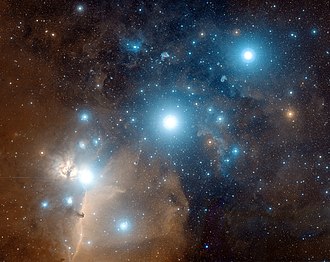Astrophotography
Astrophotography is a specialized type of photography that entails capturing images of astronomical objects, celestial events, and areas of the night sky. It is a sub-discipline of both astronomy and photography and requires specialized equipment and techniques to capture the faint light emitted by distant stars, planets, and other celestial bodies.
History
The history of astrophotography dates back to the early 19th century. The first known photograph of an astronomical object was taken in 1840 by John William Draper, who captured an image of the Moon. The development of more sensitive photographic plates and the advent of long-exposure techniques in the late 19th and early 20th centuries allowed astronomers to capture images of fainter objects, such as nebulae and galaxies.
Equipment
Astrophotography requires specialized equipment to achieve high-quality images. The primary tools include:
- Telescopes: Used to gather light from distant objects and focus it onto a camera sensor.
- Cameras: Digital cameras, particularly those with high sensitivity and low noise, are preferred. CCD and CMOS sensors are commonly used.
- Mounts: Equatorial mounts are essential for tracking the motion of the sky and preventing star trails during long exposures.
- Filters: Various filters, such as narrowband and broadband filters, are used to isolate specific wavelengths of light and enhance the visibility of certain features.
Techniques
Astrophotography involves several techniques to capture and process images:
- Long-exposure photography: Essential for capturing faint objects, long exposures allow more light to accumulate on the camera sensor.
- Stacking: Combining multiple exposures to reduce noise and increase detail.
- Image processing: Software tools are used to enhance and correct images, including adjusting contrast, removing noise, and aligning frames.
Types of Astrophotography
There are several types of astrophotography, each focusing on different aspects of the night sky:
- Planetary photography: Capturing images of planets in our Solar System.
- Deep-sky photography: Focusing on distant objects such as galaxies, nebulae, and star clusters.
- Wide-field astrophotography: Capturing large areas of the night sky, often including the Milky Way.
- Lunar photography: Imaging the surface and features of the Moon.
- Solar photography: Capturing images of the Sun, often using special filters to observe solar phenomena like sunspots and solar flares.
Challenges
Astrophotography presents several challenges, including:
- Light pollution: Artificial light from urban areas can interfere with capturing faint celestial objects.
- Atmospheric turbulence: The Earth's atmosphere can distort images, making it difficult to achieve sharp focus.
- Tracking accuracy: Precise tracking of the sky's motion is necessary to avoid star trails and ensure clear images.
Related Pages
- Astronomy
- Photography
- Telescope
- Charge-coupled device
- Equatorial mount
- Light pollution
- Long-exposure photography
Categories
Transform your life with W8MD's budget GLP-1 injections from $125.
W8MD offers a medical weight loss program to lose weight in Philadelphia. Our physician-supervised medical weight loss provides:
- Most insurances accepted or discounted self-pay rates. We will obtain insurance prior authorizations if needed.
- Generic GLP1 weight loss injections from $125 for the starting dose.
- Also offer prescription weight loss medications including Phentermine, Qsymia, Diethylpropion, Contrave etc.
NYC weight loss doctor appointments
Start your NYC weight loss journey today at our NYC medical weight loss and Philadelphia medical weight loss clinics.
- Call 718-946-5500 to lose weight in NYC or for medical weight loss in Philadelphia 215-676-2334.
- Tags:NYC medical weight loss, Philadelphia lose weight Zepbound NYC, Budget GLP1 weight loss injections, Wegovy Philadelphia, Wegovy NYC, Philadelphia medical weight loss, Brookly weight loss and Wegovy NYC
|
WikiMD's Wellness Encyclopedia |
| Let Food Be Thy Medicine Medicine Thy Food - Hippocrates |
Medical Disclaimer: WikiMD is not a substitute for professional medical advice. The information on WikiMD is provided as an information resource only, may be incorrect, outdated or misleading, and is not to be used or relied on for any diagnostic or treatment purposes. Please consult your health care provider before making any healthcare decisions or for guidance about a specific medical condition. WikiMD expressly disclaims responsibility, and shall have no liability, for any damages, loss, injury, or liability whatsoever suffered as a result of your reliance on the information contained in this site. By visiting this site you agree to the foregoing terms and conditions, which may from time to time be changed or supplemented by WikiMD. If you do not agree to the foregoing terms and conditions, you should not enter or use this site. See full disclaimer.
Credits:Most images are courtesy of Wikimedia commons, and templates, categories Wikipedia, licensed under CC BY SA or similar.
Contributors: Prab R. Tumpati, MD







